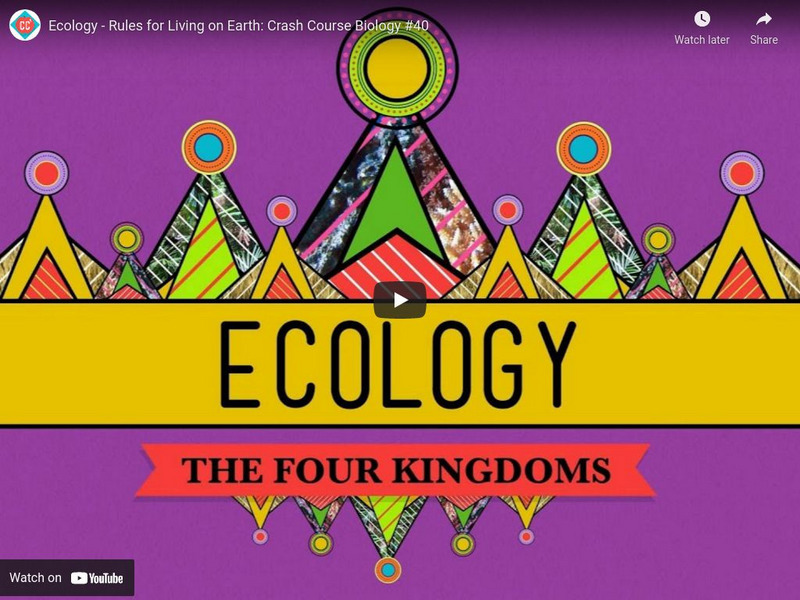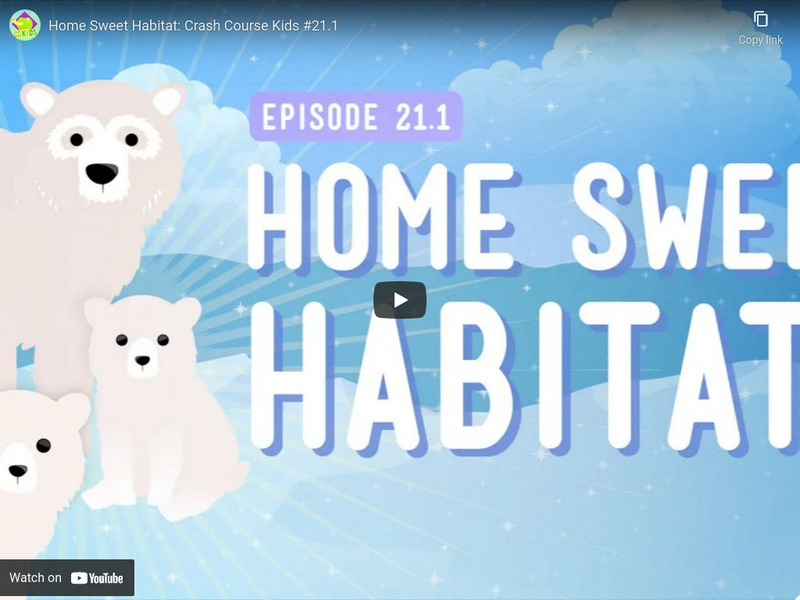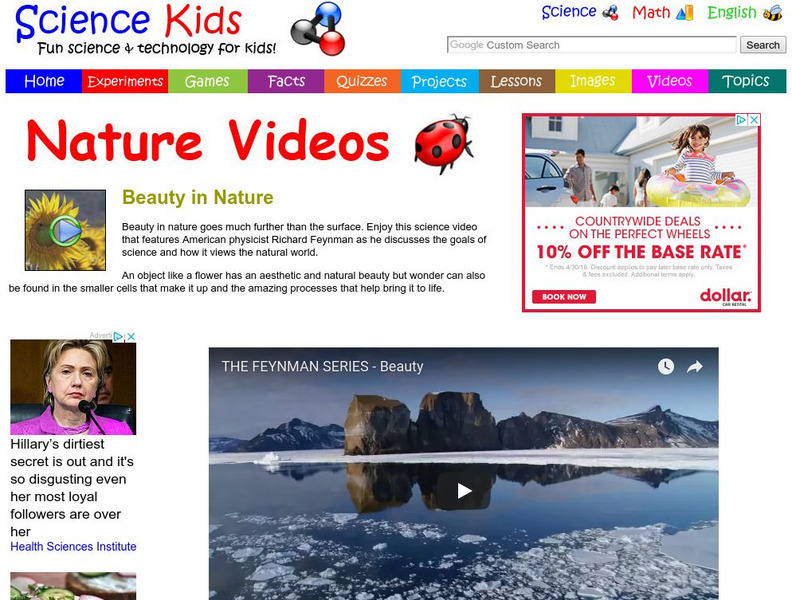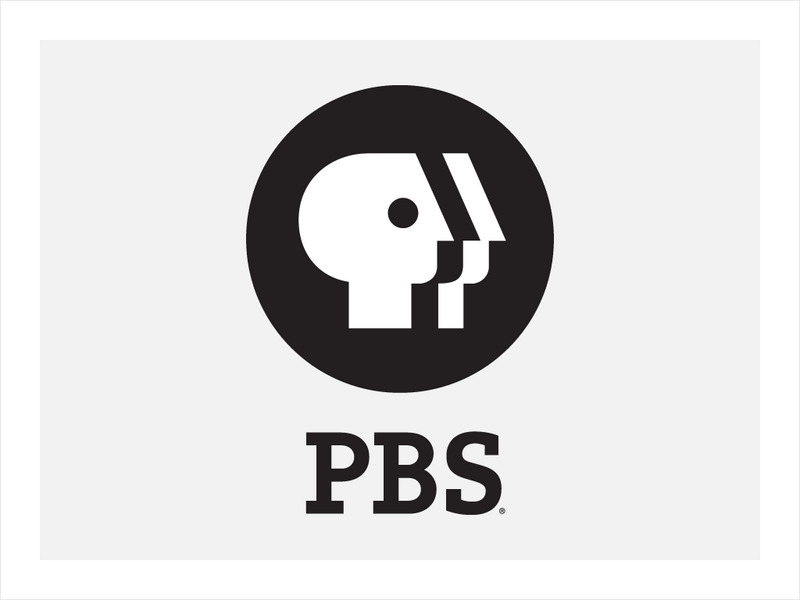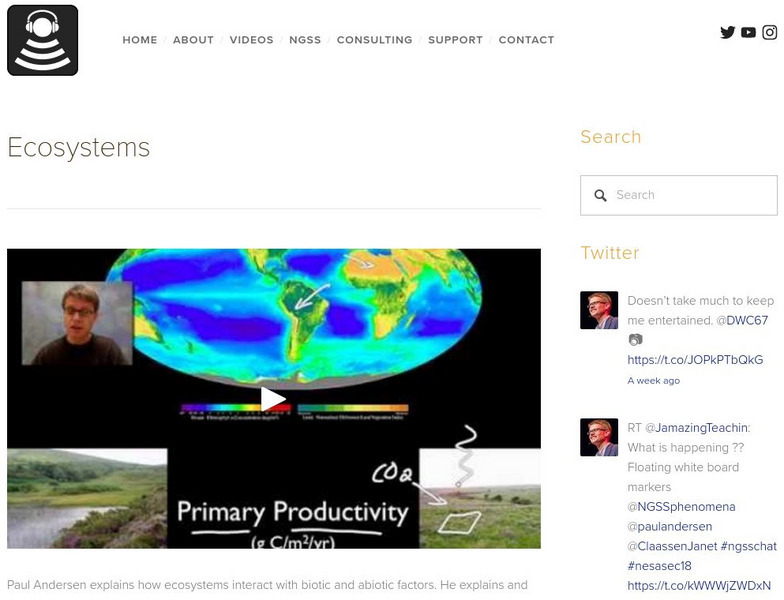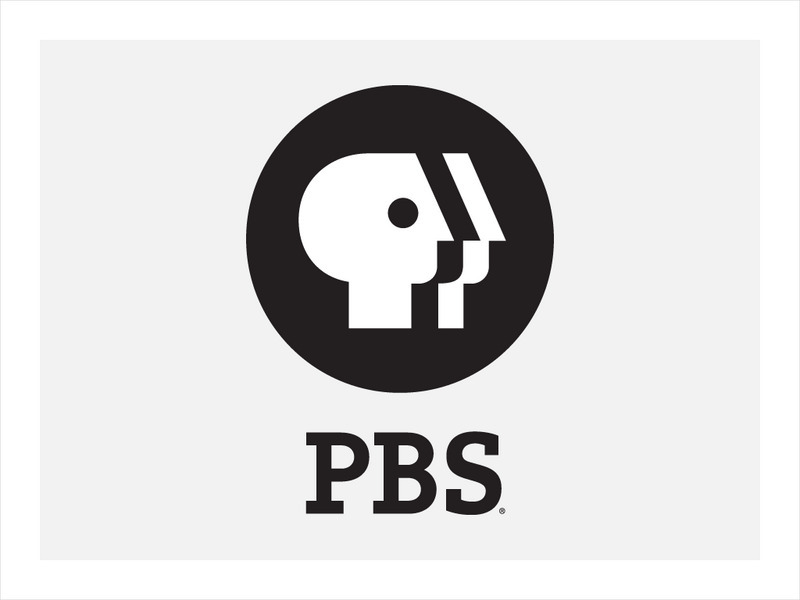PBS
Pbs Learning Media: What Is a Wetland?
In this video from WOSU Columbus, learn about wetlands, their different varieties, and why we should care about them. [1:04]
PBS
Pbs Learning Media: Dinosaur Train: Ecosystems
In this Dinosaur Train clip, Dr. Scott the paleontologist discusses ecosystems. [1:01]
PBS
Pbs Learning Media: Dinosaur Train: Living Together in an Ecosystem
In this Dinosaur Train clip, Mr. Conductor explains to the Pteranodon kids that all creatures have their own part to play in an ecosystem. This resource teaches students that all organisms in an ecosystem are connected, and the...
NPR: National Public Radio
Npr: Biosphere 2
Audio story presents information on the Biosphere 2 project, an attempt to replicate the world's biospheres in a controlled environment. Includes a map of the facility.
Crash Course
Crash Course Kids 30.1: Let's Take a Hike
Take a hike up Mt. Kilimanjaro to talk about how the geosphere changes based on many different things. On the same mountain, travel through many different habitats like rain forests, savannas, and moorlands. [5:27]
Crash Course
Crash Course Biology #40: Ecology Rules for Living on Earth
Hank introduces us to ecology - the study of the rules of engagement for all of us earthlings - which seeks to explain why the world looks and acts the way it does. The world is crammed with things, both animate and not, that have been...
Crash Course
Crash Course Kids 33.1: H2 O No! Fresh Water Problems
In this episode of Crash Course Kids, Sabrina Cruz talks about ecosystems and how one small change can lead to a cascade effect in the entire ecosystem. [4:59]
Minute Earth
Minute Earth: Why Poor Places Are More Diverse
This video provides a brief explanation of why different ecosystems vary in species variety. [3:32]
Crash Course
Crash Course Kids 21.1: Home Sweet Habitat
How would a polar bear do if you put it in the desert? Not well. But why? Why can't anything live anywhere? Well, this has to do with habitats and how animals (including humans) are suited for living in one place over another. In this...
Crash Course
Crash Course Kids 21.2: Food Webs
Last time we put a polar bear in the desert and we still feel bad about that, but there's a lot more going on in ecosystems than just temperature. In fact, there are so many elements in ecosystems, that if just one leaves or gets out of...
NOAA
Noaa: Estuary Education: Estuary Scavenger Hunt
Follow this group of students through their scavenger hunt in the estuary. Take a look at the living and nonliving things that make this ecosystem a special place. [9:38]
Bozeman Science
Bozeman Science: Ecosystem Dynamics, Functioning & Resilience
In this video, Paul Andersen explains how ecosystems respond to disruptions. Disruptions can cause changes in the number and variety of organisms. It can also lead to migration, extinction or even speciation. Ecosystems that have higher...
Bozeman Science
Bozeman Science: Cycles of Matter & Energy Transfer in Ecosystems
Paul Andersen explains how matter moves from the environment into living organisms and back into the environment. Food webs are used to show how matter and energy move through organisms. Ecological pyramids show that matter and energy...
PBS
Pbs Learning Media: Oil Contamination Affects Food Web
This video adapted from KTOO explores the impact of oil contamination on the herring population of Prince William Sound, Alaska, in 1999, 10 years after the Exxon Valdez oil spill.3m 03s
Khan Academy
Khan Academy: 5 Human Impacts on the Environment
In this Crash Course video, understand how the ecosystems is affected by human activity. [9:59]
PBS
Pbs: Career Connections: Environmental Scientist
Explore the career of an environmental researcher in this video. Learn how this career works to improve natural ecosystems. [3:17]
Science for Kids
Science Kids: Nature Videos: Beauty in Nature
This video discusses the beauty of nature. [5:10]
PBS
Pbs Kids: Eeko World: Plants and Animals
Interactive material and animated video for kids to learn about the ecology of plants and animals, and what they can do to protect the environment.
Sophia Learning
Sophia: Living Organisms and Their Environment: Lesson 4
This lesson will discuss the interactions of and interdependence among living things. It is 4 of 4 in the series titled "Living Organisms and Their Environment."
Bozeman Science
Bozeman Science: Ecosystems
Paul Andersen explains how ecosystems interact with biotic and abiotic factors. He explains and gives examples of food chains and food webs. He shows how limiting factors eventually leads to logistic growth. Real data from Yellowstone...
PBS
Pbs Teachers: Real Scientists: Forest Canopy Researcher
Learn about a scientist who invented a tool to help her do her job. Watch how she climbs trees to study epiphytes that live in the forest canopy.



